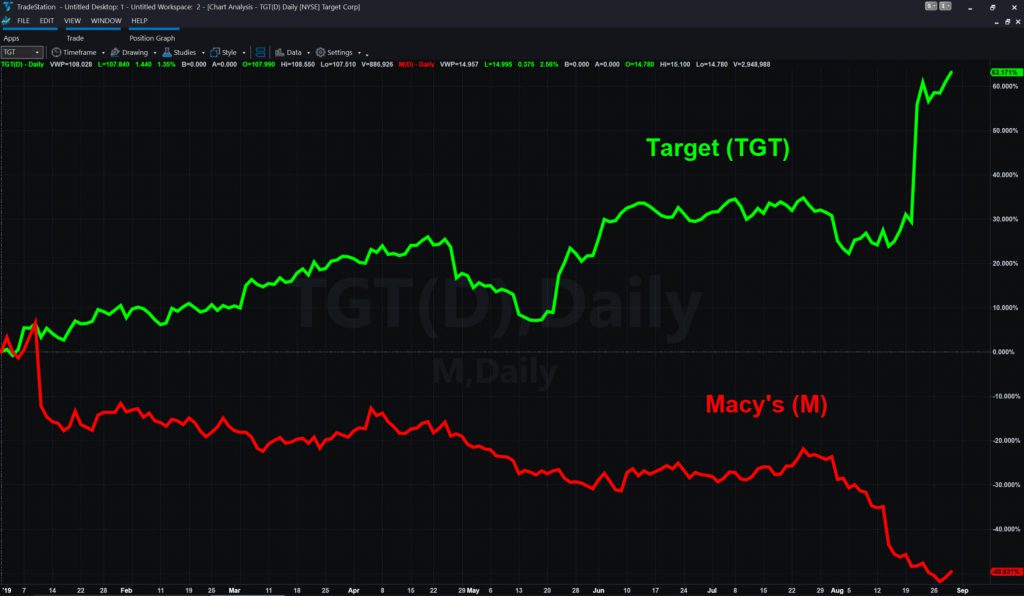The U.S. consumer keeps roaring ahead, even as investors worry about President Trump’s trade war against China.
Consumer spending rose 4.7 percent between April and June, according to the Commerce Department’s gross domestic product (GDP). That was not only a big revision up from the initial 4.3 percent reading. It was also the largest gain since 2014.
Consumer spending matters because it accounts for two-thirds of the U.S. economy. It’s grown slower this decade as Americans recovered from the financial crisis and younger workers struggle with student debt. However, the tide has turned since April as years of strong employment and rising wages take effect.
The rebound in consumption comes at a potentially important time for the U.S. because other areas are starting to weaken. Check out these downward revisions in second-quarter growth:
- Gross private fixed investment fell 6.1 percent, worse than the earlier -5.5 percent reading. The big culprits? Housing and intellectual property spending were both cut by more than a full percentage point.
- Economists trimmed state and local government spending growth by 0.9 percentage points.
- Exports were revised down from a 5.2 percent drop to a 5.8 percent drop. Here’s where you see some of the impact from the trade war.
- Overall GDP growth was just 2 percent versus 2.1 percent earlier. That matched consensus forecasts.
The Changing Face of Retail
Today’s strong consumer data comes at a strange time for consumer stocks. Traditional retailers like Macy’s (M) and Kohl’s (KSS) have plunged to their lowest levels of the decade as shopping habits change. But new winners are emerging:
- Wal-Mart Stores (WMT) is up 22 percent this year by focusing on low prices and online sales.
- Target (TGT) is up 63 percent in 2019 by revamping its stores and growing online.
- Starbucks (SBUX) is up 51 percent thanks to better traffic and higher prices.
- Home Depot (HD) is up 31 percent. While home sales are slowing, HD’s benefiting from more spending by contractors.
That list was based on a quick RadarScreen® analysis of retail and consumer stocks. It simply looked for companies with large market capitalizations that were also above their 200-day moving averages.

Other names were on the list. Overall, companies seem to be winning the Darwinian war for survival in three ways:
- A successful on-demand business model. Traditional retailers sold merchandise seasonally. The new survivors let you order anything you want online, and get it when you want.
- A focus on experiences and services over “stuff.” That’s why a lot of restaurants are on the list.
- Low prices. Aside from WMT, companies like Dollar Tree (DLTR) and Dollar General (DG) are also thriving in the new environment.
Consumer vs. Tariffs
Today’s revised numbers are the last meaningful report for the second quarter ending in June. Consumer data since then has remained strong — especially July’s retail sales report, which came in more than twice estimates.
Tariffs have taken a small toll on sentiment and confidence surveys, but so far there’s been little sign of those worries having a real impact on actual spending. Jobless claims remain near long-term lows, a sign the job market has yet to weaken much either.
However, worries about the trade war has hurt business investment and manufacturing. That’s hammered interest rates and spurred fears of a recession.
In conclusion, today’s revised GDP report clearly show the diverging forces pulling on the U.S. economy. The big question now is whether the current pace of consumer spending will continue into the holidays, or is this as good as it gets?
The answer may shape the direction of the S&P 500 going forward.


























